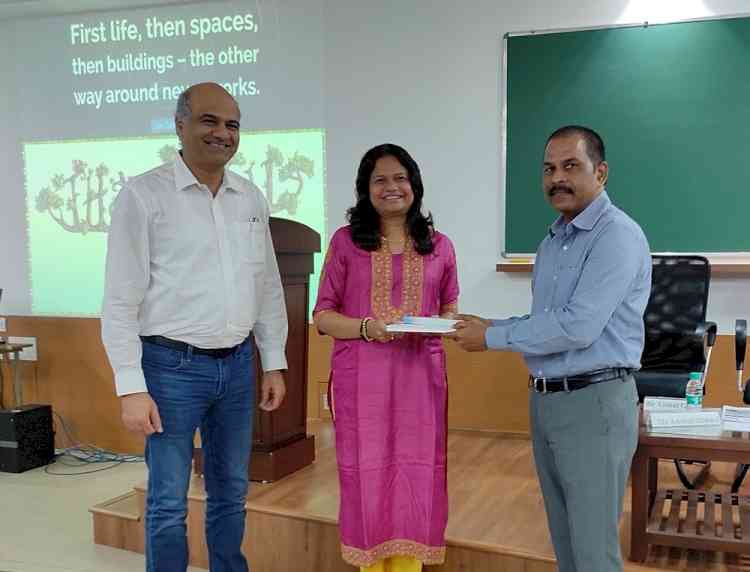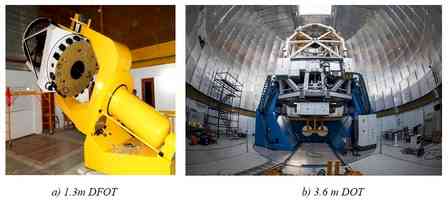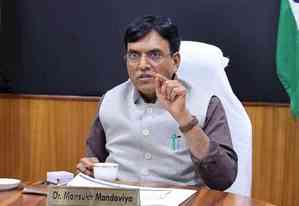Telangana state drafted a cool roof policy with a target to implement 100 sq km of cool roof area in Hyderabad and 300 sq km in Telangana state: Arvind Kumar, Special Chief Secretary, MA&UD
Urban areas are becoming warmer than their rural surroundings

Hyderabad, January 6, 2023: : Aga Khan Agency for Habitat (AKAH) India in partnership with the International Institute of Information Technology Hyderabad (IIITH) and National Institute of Urban Affairs (NIUA) conducted a workshop on Urban Heat Island (UHI) studies done in Hyderabad on Thursday.
It was conducted to explore opportunities for implementation of mitigation measures in alignment with draft Cool Roof Policy for Hyderabad in collaboration with government and non-governmental partners.
Arvind Kumar, Special Chief Secretary, MA&UD delivered a special message during the workshop. While addressing the gathering he said, the Telangana govt. was keen on taking forward cool roofs as a mitigation measure and the state will be a fore runner in cool roof implementation at a large scale. The state has already drafted a cool roof policy with a target to implement 100 sq km of cool roof area in Hyderabad and 300 sq km in Telangana state.
As cities develop, more vegetation is lost, and surfaces are paved or covered with buildings. This change results in less shade and moisture therefore urban areas become warmer than their rural surroundings, a phenomenon known as the “urban heat island effect”. There is a large amount of heat released into the atmosphere as an effect of climate change, which is further catalysed by UHI (heat generated by human induced activities – unregulated development, air conditioners) making the environment unbearably warm & in a few cases fatal (humidity + UHI effects).
The workshop aimed to disseminate the findings of two action-based research on measures to mitigate the health, environmental, and energy effects of UHI. The study by IIITH (Institute of Information Technology, Hyderabad) conducted in summer of 2022 compared the temperatures of grey and freshly coated white roof (high reflective paint) yielding positive results in the form of maximum reduction in the indoor air for the white roof by 3.6°C, and over deck temperatures by 19.8°C, compared to the space with a grey roof. The on-spot measurements for roof surface temperature of a China mosaic roof were found to be similar to freshly coated cool roof.
The workshop was attended by municipal corporation staff especially the PWD who got to understand UHI phenomenon, its harmful impacts in the city and discussed mitigation action for reducing the hotspots through building and nature-based solutions. V Krishna IFS, Additional Commissioner, GHMC also attended the workshop and discussed about Greening Hyderabad with parks and Miyawaki forests under the green policy of the Telangana government. The interactive workshop was designed to support ideas and understand opportunities and challenges in urban heat island mitigation.
Several experiments have been conducted in the last 15 years to understand the impact of cool roofs in reducing temperatures and reducing AC energy use. Cool roofs is a simple and traditional technique which can improve the thermal conditions inside unconditioned buildings which do not have access to mechanical cooling such as low income housing, primary health centers, hospitals and schools.
Dr. Vishal Garg (Professor, IIIT Hyderabad) emphasized that with the predictions from various sources, in cities the heat events could get more frequent and much longer in the future, beyond the human survival limit. There is an urgent need to take up mitigation measures for UHI.
Commenting on the workshop Prerana Langa, CEO, Aga Khan Agency for Habitat India said, “The harsh reality of climate change is manifesting itself in real time in the form of extreme weather events, shifting seasonal patterns, rising sea level rises, and an increase in average surface temperature. Aga Khan Agency for Habitat (AKAH) India, in collaboration with IIIT Hyderabad, conducted a pioneering study using ‘satellite and real-time imagery’ to identify measures to mitigate the risks of Urban Heat Island (UHI), with the goal of 'building' climate-conscious cities. This consultation, I am confident, will yield fruitful results and lay the groundwork for future development of strategies to decrease scorching temperatures and achieve thermal comfort in real-time scenarios”.


 City Air News
City Air News 







